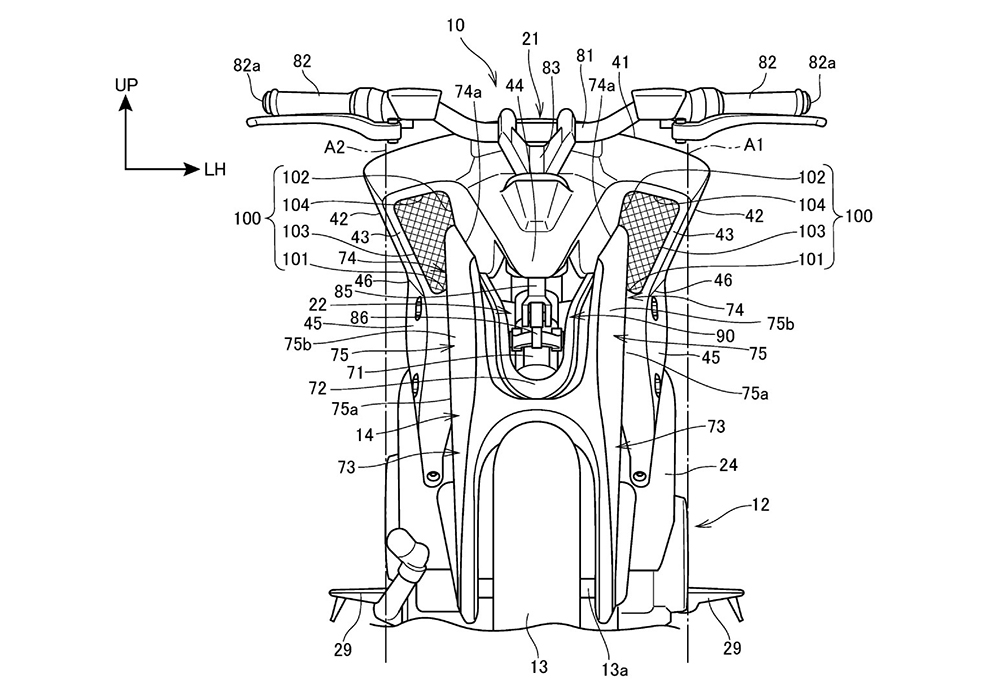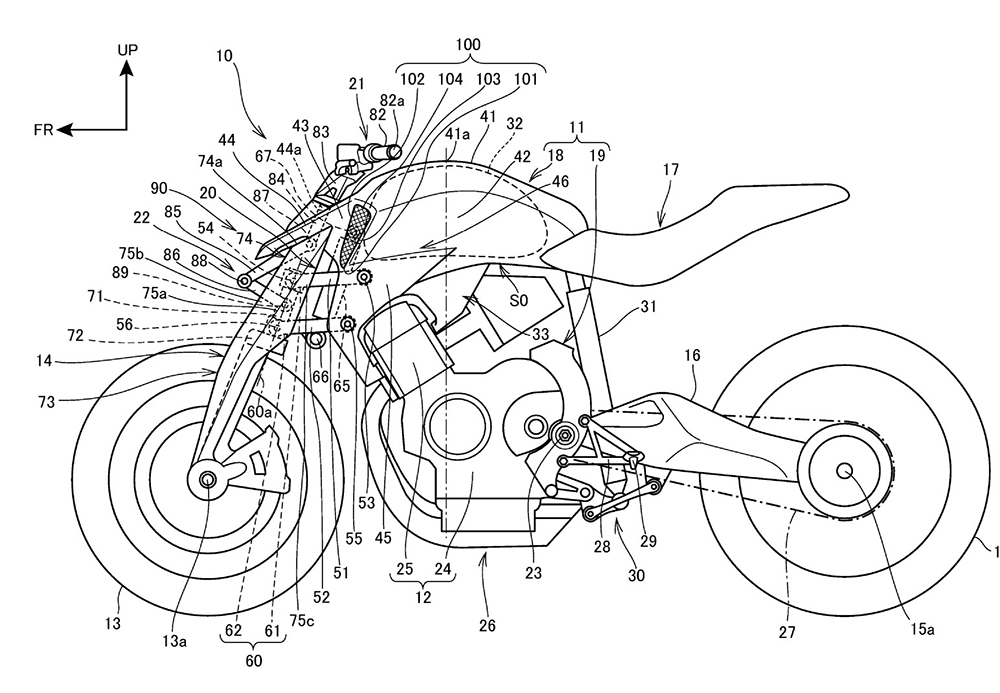A year ago Honda filed detailed patents showing what appeared to be a next-generation CB1000R – a winged, Fireblade-powered naked bike to compete against the latest crop of super-powerful unfaired machines – but this new design shows that an even more radical variation is also under consideration, dropping telescopic forks and a conventional chassis in favour of a completely different setup.
Honda already has form when it comes to funny front ends. The Gold Wing has adopted a variation on the ‘Hossack’ style girder fork, something that’s already used by BMW’s K1600 models, and the new CB1000R-style bike seen in this patent takes the same route.

In this instance, the girder-style forks, supported on parallel, front-facing wishbones and sprung by a central, coil-over shock, aren’t being championed for the usual reasons of separating suspension and braking forces to reduce dive, but on the basis of vastly improving aerodynamics.
One of the problems with telescopic forks is their circular cross-section. They need to be fat to withstand the huge braking forces that try to bend them every time you hit the anchors, but that’s at odds with a desire to allow a controlled amount of lateral flex to absorb bumps when the bike is cranked over in a corner. Ideally, you’d want forks that are thick when seen from the side, providing longitudinal rigidity, but slimmer when seen head-on to allow sideways flex. That’s exactly what this new Honda fork design allows.

Importantly, it also means that the bike’s frontal aerodynamics are substantially improved. The girder-style fork is cast into an aero-efficient shape, tucked in close to the wheel on either side and narrowing above it, with slanted sides that direct air towards two large intakes, one on either side of the fuel tank. The front of the bike’s frame, carrying the suspension, steering and front shock mount, is also cast alloy, with a pointed nose section in front of the steering head.
Unlike a conventional alloy frame, this front section is bolted to the cylinder head of the four-cylinder engine and features a spine-like upper rail that runs over the fuel tank and into the seat. The engine is fully structural, with only a small second frame section around the swingarm pivot, and the rear shock is unusually long, reaching all the way from a conventional rising-rate linkage below the single-sided swingarm to an upper mount just below the rider’s seat.

Although last year’s patent for a more conventional CB1000R replacement build around the last-generation Fireblade engine is more likely to become the next production model, the design seen here could well appear in a concept bike even if it proves too radical to be applied directly to a production offering.

Ben Purvis











